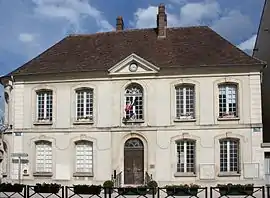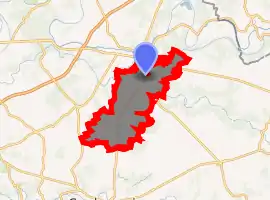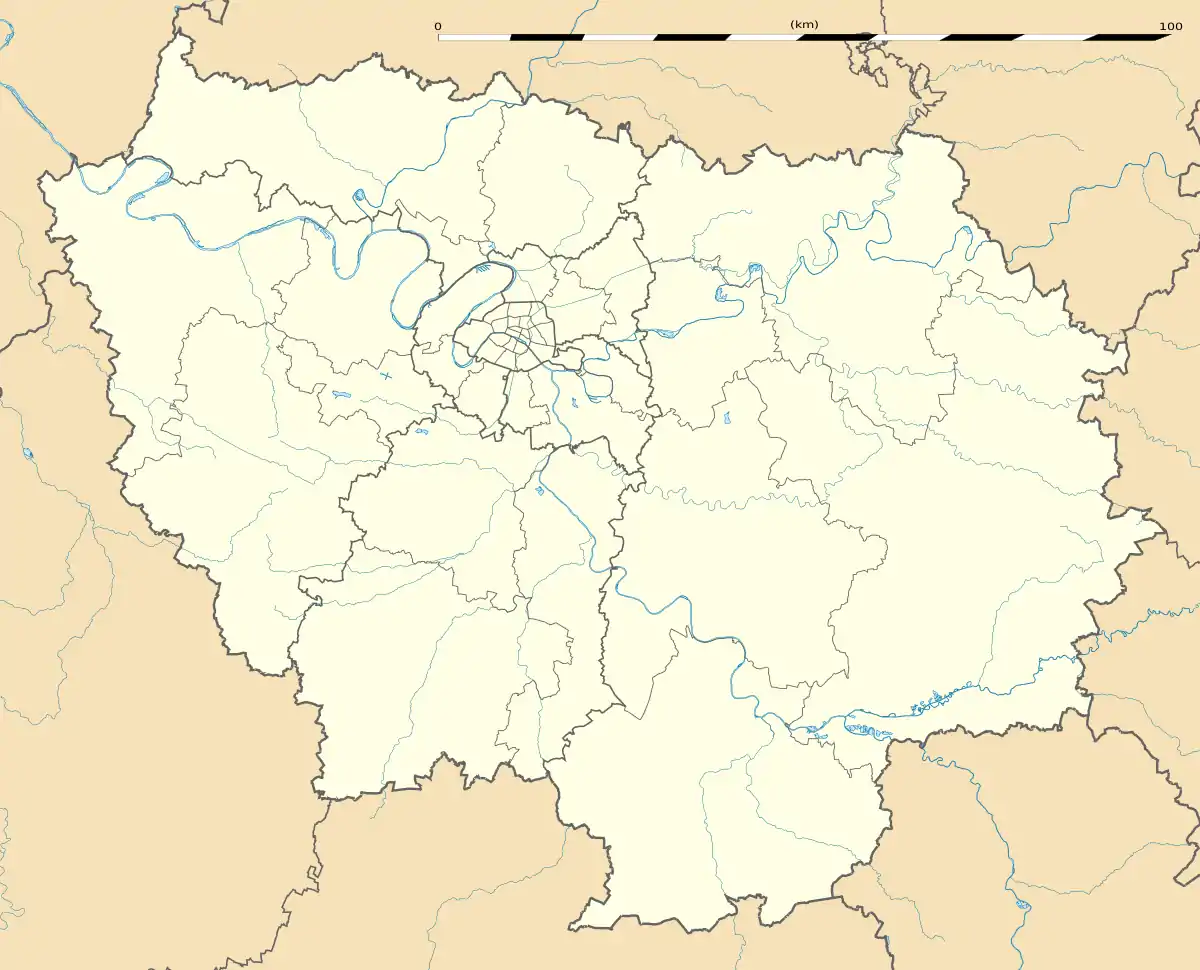Jouarre
Jouarre (French: [ʒwaʁ] (![]() listen)) is a commune in the Seine-et-Marne department in the Île-de-France region in north-central France.
listen)) is a commune in the Seine-et-Marne department in the Île-de-France region in north-central France.
Jouarre | |
|---|---|
 The town hall in Jouarre | |
.svg.png.webp) Coat of arms | |
Location of Jouarre 
| |
 Jouarre  Jouarre | |
| Coordinates: 48°55′38″N 3°07′51″E | |
| Country | France |
| Region | Île-de-France |
| Department | Seine-et-Marne |
| Arrondissement | Meaux |
| Canton | La Ferté-sous-Jouarre |
| Intercommunality | CA Coulommiers Pays de Brie |
| Government | |
| • Mayor (2020–2026) | Fabien Vallée |
| Area 1 | 42.19 km2 (16.29 sq mi) |
| Population (2017-01-01)[1] | 4,337 |
| • Density | 100/km2 (270/sq mi) |
| Time zone | UTC+01:00 (CET) |
| • Summer (DST) | UTC+02:00 (CEST) |
| INSEE/Postal code | 77238 /77640 |
| Elevation | 51–183 m (167–600 ft) |
| 1 French Land Register data, which excludes lakes, ponds, glaciers > 1 km2 (0.386 sq mi or 247 acres) and river estuaries. | |
Jouarre Abbey
It is the site of the Jouarre Abbey, a Merovingian foundation of Abbess Theodochilde or Telchilde, traditionally in 630, inspired by the visit of Columban, the travelling Irish monk who inspired monastic institution-building in the early seventh century. At Jouarre, there was a community of monks as well as nuns, but all were under the rule of the abbess, who in 1225 was granted immunity from interference by the bishop of Meaux, answering only to the Pope.
The Merovingian (pre-Romanesque) crypt beneath the Romanesque abbey church contains a number of burials in sarcophagi, notably that of Theodochilde's brother, Agilbert (died 680), carved with a tableau of the Last Judgment and Christ in Majesty, highlights of pre-Romanesque sculpture. In the mid-ninth century the abbey acquired relics of St. Potentien; the relics assembled at Jouarre attracted pilgrims. The reputation of the house stood so high the abbey received a visit from Pope Innocent II in 1131 and was able to house a synod in 1133. The abbess's submission to the bishop of Meaux did not come about until Bossuet held the post in 1690.[2]
The present convent buildings, once again occupied by Benedictine nuns, date from the eighteenth century; their traditional vegetable and fruit garden (potager) are notable.
Demographics
Inhabitants are called Jotranciens.
References
- "Populations légales 2017". INSEE. Retrieved 6 January 2020.
- Bossuet vs. Jouarre's Women Archived 2005-12-01 at Archive.today
External links
| Wikimedia Commons has media related to Jouarre. |
- Official site (in French)
- 1999 Land Use, from IAURIF (Institute for Urban Planning and Development of the Paris-Île-de-France région) (in English)
- Base Mérimée: Search for heritage in the commune, Ministère français de la Culture. (in French)
- History of the abbey of Jouarre